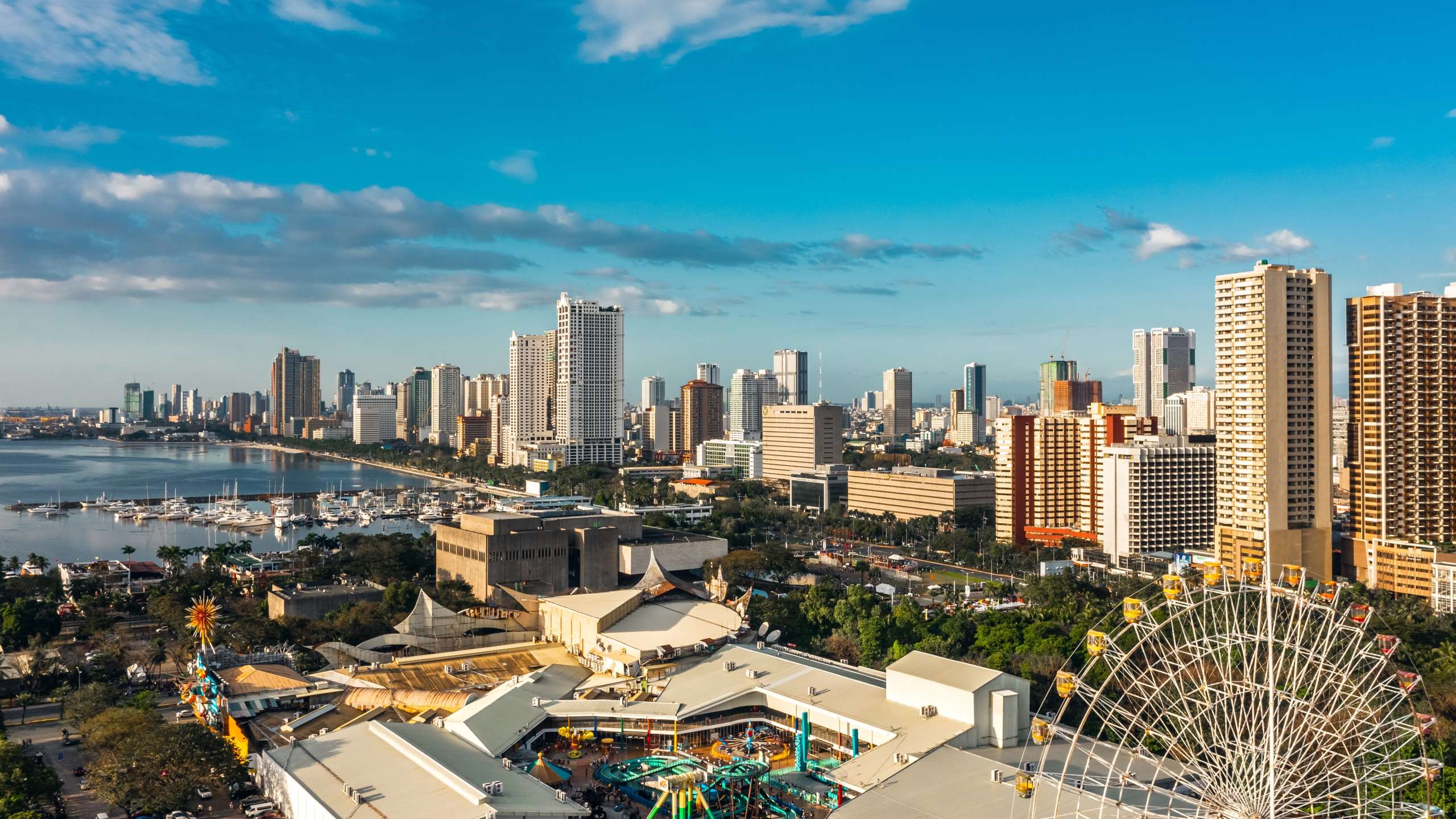Newsletter
Keep yourself update with our current news for Juwai IQI

India’s Office Market in 2025: Global Capability Centres Drive Record Leasing Activity
Written by Manu Bhazin, Country Head of IndiaIndia’s office market is experiencing a structural transformation, powered by the rapid growth of Global Capability Centres (GCCs). No longer just cost-saving back offices, GCCs are evolving into strategic innovation hubs for multinational firms, contributing significantly to leasing activity. In 2024, GCCs leased 28 million sq. ft. of Grade A office space—accounting for over a third of the record 77.2 million sq. ft. leased nationwide, a 15% year-on-year jump. Leading corridors like Bengaluru, Gurugram, and Hyderabad are witnessing sustained occupancy and rising developer confidence, underpinned by India's deep digital talent pool and expanding infrastructure. Projections from ICRA estimate that GCCs will lease an additional 50–55 million sq. ft. of office space by FY2027, capturing nearly 40% of total demand across the top six cities. EY forecasts suggest the number of GCCs will grow from 1,580 in 2023 to around 2,400 by 2030, potentially employing over 4.5 million professionals. Despite rising demand, India maintains one of the world’s most cost-effective prime rental markets, with developers now focused on delivering ESG-aligned, flexible workspaces that meet global standards. With this dual advantage of affordability and capability, India is fast becoming a global headquarters for innovation—not just operations. Discover more country insights here!Download
31 October

Philippine Property Market in Q3 2025: Vacancy Drops, Capital Values Rise
Written by Emmanuel Andrew Venturina, Head of IQI PhilippinesThe Philippine real estate market remained resilient in Q3 2025, showing signs of sustained demand across both commercial and residential segments despite broader global uncertainties.Metro Manila’s prime office vacancy rate dropped to 8.5% from 9.2% in the previous quarter, while newly launched office space saw a healthy take-up rate of 75%—a reflection of ongoing local and international business expansions. Residential vacancy held at approximately 12%, underpinned by continued demand for condominiums and affordable housing in key growth corridors. Capital values also climbed across the board. Residential properties in Metro Manila appreciated by 6.8% year-on-year, while commercial properties posted gains of 5.4%. This uplift is closely tied to major infrastructure rollouts, including expanded transport networks and ongoing government-led development projects. Together, these fundamentals suggest a market well-positioned for continued momentum heading into 2026, with urban connectivity and housing accessibility acting as key drivers. Discover more country insights here!Download
31 October

Karachi’s Property Market Strengthens on Infrastructure Boost
Written by Junaid Hamid, Head of IQI Karachi PakistanKarachi’s Property Market in October 2025: Infrastructure-led Optimism Gains Ground Karachi’s real estate outlook for October 2025 is anchored by a wave of infrastructure improvements and long-term urban planning. The newly announced Greater Karachi Regional Plan 2047 (GKRP) promises to reshape future development decisions with clearer zoning, housing, transport, and utility strategies. While still in its early stages, the plan offers investors improved predictability—especially in corridors prioritized for infrastructure sequencing. On the ground, the city has launched a targeted road repair program, with District Central seeing active resurfacing. These upgrades, although subtle, improve access and make previously overlooked inner-neighbourhood assets more attractive to renters and buyers alike. Several major flyover projects—most notably at Khalid Bin Waleed Road, Azeem Pura, and Quaidabad—are set to dramatically ease cross-city congestion, shortening travel times and boosting the appeal of adjacent micro-markets. Water reliability is also getting attention, with progress on the Hub Canal and K-IV upgrades expected to ease supply pressures by year-end. Coastal value is getting a lift too, with the launch of Pakistan’s first floating mangrove park in Korangi Creek, enhancing the lifestyle appeal of waterfront areas. For investors, the near-term play lies in execution: well-positioned assets near upgraded roads, flyovers, or utility improvements are likely to see rental and occupancy gains first, followed by pricing uplift once public confidence in delivery grows. Source by Zameen News Discover more country insights here!Download
31 October

Strong Momentum Returns to Australia’s Housing Market
Written by Lily Chong, Head of IQI AustraliaAustralia’s housing markets are gathering strong momentum as we head deeper into spring, with September delivering the sharpest monthly rise in national dwelling values since October 2023. The Cotality Home Value Index (HVI) lifted 0.8% over the month, driven by a solid 0.9% gain across the capital cities. On a quarterly basis, national dwelling values rose 2.2% in the September quarter—up from 1.5% in June and more than double the 1.1% growth in March. In dollar terms, this equates to an $18,215 increase in the median dwelling value over just three months. Growth remains broad-based, with every capital city and regional market recording gains over the month, quarter, and year. However, the pace of growth is again showing clear divergence: Perth (+4.0%) and Brisbane (+3.5%) led the capitals through the September quarter, supported by strong unit market demand. Darwin (+5.9%) surged ahead, marking the fastest quarterly growth rate of all capitals. Most cities are still seeing stronger gains in house values, though Brisbane, Perth and Hobart stand out with unit prices outpacing houses due to ongoing supply shortages. According to Cotality’s Research Director, Tim Lawless, supply constraints are driving much of this momentum: Darwin listings are 53% below average Perth listings are 45% below average Brisbane listings are 31% below average At the same time, quarterly sales activity is running above average, highlighting the mismatch between supply and demand. Across value segments, the lower and middle tiers are now leading the upswing. September quarter growth was strongest in the middle of the market (+2.7%), followed by the lower quartile (+2.6%), while the upper quartile rose 1.8%. This shift suggests that improved borrowing capacity is supporting buyers at slightly higher price points. Advertised stock levels remain tight, with capital city listings sitting 18% below the five-year average at the end of September. Meanwhile, sales activity was 7.3% above average, adding further fuel to the market. Selling conditions have strengthened noticeably, with auction clearance rates holding around 70% since mid-August—well above the average levels seen earlier in the year (63% in June and 62% in March). Source: Cotality Discover more country insights here!Download
31 October

Hong Kong Property: Office Net Absorption Turns Positive as Mass Residential Values Tick Up
Office Sector: Hong Kong’s office market showed signs of recovery in July 2025, with a positive net absorption of 189,500 sq ft, largely driven by a flight-to-quality trend as tenants take advantage of softening rents. While the overall Grade A office vacancy rate improved slightly to 11.6%, certain submarkets like Kowloon East and Wanchai/Causeway Bay still have high vacancies. Monthly office rents declined 0.5% overall, with Hong Kong East recording the steepest drop at 2.8%. Key leasing transactions took place in premium buildings such as Two Harbour Square and the Manulife Financial Centre. Meanwhile, a notable asset disposal in Central highlighted continued investor activity despite the cautious rental environment. Residential Sector: In the residential market, overall transaction volumes dipped 3.1% month-on-month in July, though secondary market activity increased. Mass residential capital values edged up 0.3% as buyers gravitated toward more affordable housing options amid narrowing price gaps between private and subsidized flats. The luxury segment also saw movement, with a unit at TWELVE PEAKS selling for HKD 288 million—a 37% discount from its 2018 price. Despite a slowdown in total consideration value, positive sentiment persists in the primary market, evidenced by strong uptake at new project launches like Deep Water Pavilia. Source by Jones Lang Laselle, The Land Registry For more countries updatesDownload Now!
1 October

Real Estate: The $10 Trillion Catalyst for India’s Growth Story
written by MANU BHAZIN, Head of IQI IndiaIndia’s real estate sector has quietly but steadily transformed into one of the biggest engines of economic growth. From contributing less than 5% to GDP in the early 2000s, the sector now accounts for 6–8%, and by 2047, it is projected to reach an impressive 14–20%. This means real estate alone could become a $5–10 trillion market, acting as a growth catalyst for India’s ambition of becoming a $35–40 trillion economy by 2047, according to a Colliers–CREDAI report. The momentum is already visible—India’s Grade A office stock has tripled since 2010 to 800 million sq. ft., driven by demand from GCCs, BFSI giants, technology firms, and flex operators. By 2047, office real estate is projected to triple again, reaching 2.5–3.0 billion sq. ft. Meanwhile, industrial and warehousing stock, which stood at under 50 million sq. ft. in 2010 and has now surged past 250 million sq. ft., is set to cross 2 billion sq. ft., supported by e-commerce growth, infrastructure upgrades, and global supply chain diversification. The government is also playing a key role in supporting this momentum. The recent overhaul of the GST regime is a game-changer for developers and homebuyers alike. By rationalising slab inputs into just two rates—5% and 18%—and reducing taxes on key inputs like cement (from 28% to 18%) and construction materials such as steel, aluminium, marble, bricks, and tiles (from 12% to 5%), construction costs are expected to fall by 3–5%. If developers pass on these savings, home prices in the affordable and mid-income segments could drop by 2–4%—providing much-needed relief for households stretched by rising interest rates and inflation. As India moves toward its $40 trillion economic ambition, the role of real estate cannot be overstated. With technology, policy, and demand aligning, the sector is poised to become the heartbeat of India’s $40 trillion future. For more countries updateDownload Now!
1 October

Philippines Opens Doors to Global Investors with 99-Year Land Lease & Major Industrial Expansion in Tarlac
written by EMMANUEL ANDREW VENTURINA, Head of IQI PhilippinesThe Philippines government's new 99-year land lease policy under President Ferdinand Marcos marks a strategic shift aimed at boosting foreign investment. Historically, foreigners were restricted from owning land and could only lease it for limited durations. This new long-term lease policy offers foreign investors near-ownership security, aligning the Philippines with global standards and making it more attractive for investments in real estate, tourism, manufacturing, and other sectors. This approach is expected to enhance foreign capital inflows, generate jobs, and facilitate technology transfer, ultimately diversifying and strengthening the local economy. Simultaneously, infrastructure and industrial growth are accelerating, particularly in Central Luzon. Aboitiz InfraCapital has launched the Tari Estate in Tarlac City, a 200-hectare development designed as a smart, sustainable business hub. With strong government backing and strategic connectivity to transport networks, the project is expected to become a catalyst for regional economic growth. Its integrated offerings—from residential to commercial—position Central Luzon as a rising investment destination, reinforcing investor confidence in the Philippines' evolving real estate and economic landscape. For more countries updateDownload Now!
1 October

Unlocking Opportunity: Pakistan’s Rising Mid-Income Real Estate Market Market Overview
written by JUNAID HAMID, Head of IQI Karachi PakistanPakistan’s real estate sector in 2025 is experiencing strong growth in the affordable and mid-income housing segment, a space that is emerging as one of the most dynamic drivers of urban development. With nearly 60 percent of the population under 30 and household formation rising steadily, demand is expanding beyond luxury enclaves toward modern, cost-efficient communities. Cities such as Lahore, Karachi, and Islamabad are leading the trend, with developers focusing on compact, master-planned projects that deliver both value and quality of life. Capital appreciation in this segment is averaging 6 to 8 percent annually, while rental yields of 5 to 6 percent provide investors with a balanced income stream. Regulatory Dynamic Supportive policies are adding momentum to this shift. The government’s housing finance initiatives, together with updated mortgage frameworks, are creating new pathways for aspiring homeowners. Digital land record reforms and streamlined approval processes are improving transparency, encouraging institutional investors to enter the housing finance space. Incentives for developers to build within planned urban frameworks are ensuring that affordable housing is both scalable and sustainable, aligning growth with long-term city masterplans. Urban Planning Innovative planning is redefining the housing landscape. Gated mid-income communities are being developed with integrated schools, retail promenades, healthcare facilities, and public green spaces, reducing pressure on city centers. Increasingly, energy-efficient designs, smart security systems, and sustainable infrastructure are being incorporated as standard features. Connectivity is a key advantage: new road networks and transit projects are extending city boundaries, unlocking suburban corridors for modern residential projects. This fusion of accessibility and amenities is creating vibrant, self-sufficient neighborhoods that appeal to families and young professionals alike. What It Means For Investors For investors, Pakistan’s affordable and mid-income housing offers a compelling mix of growth, resilience, and long-term relevance. The segment generates multiple income opportunities through rental returns and capital appreciation, while benefiting from consistent end-user demand. Strategic investments in projects by reputable developers—particularly those located in emerging urban corridors—promise stable cash flows and sustained value growth. As Pakistan’s urban landscape expands, mid-income housing is positioning itself as both a cornerstone of inclusive development and a rewarding avenue for global investors seeking exposure to a dynamic, youthful market. For more countries updateDownload Now!
1 October

































